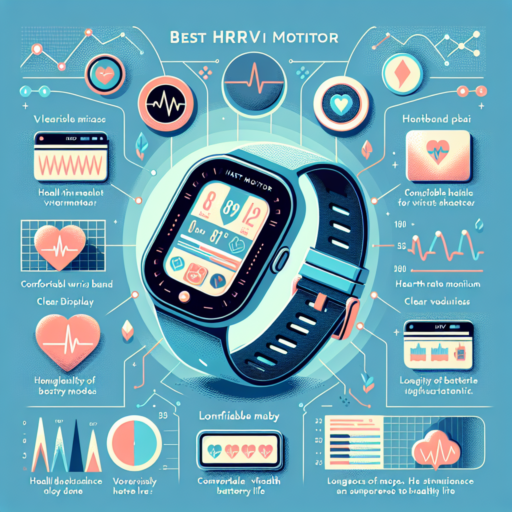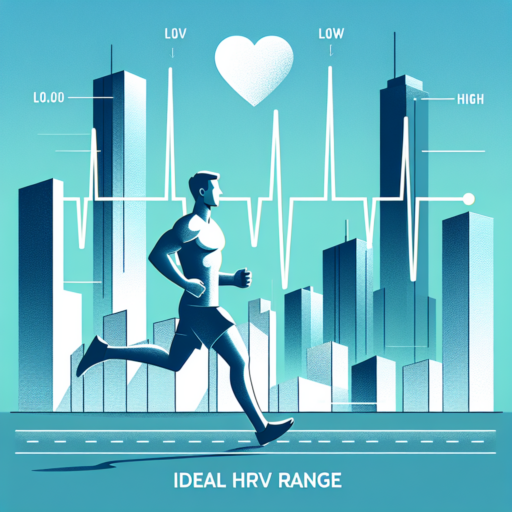What is the most accurate HRV measure?
Understanding the most accurate Heart Rate Variability (HRV) measure is crucial for athletes, coaches, and individuals focused on optimizing health and performance. HRV, a significant marker of autonomic nervous system activity and overall well-being, can be assessed through several methods. However, accuracy varies depending on the approach and technology used.
Time-Domain Analysis stands out as one of the most reliable HRV measures. This method, particularly the RMSSD (Root Mean Square of the Successive Differences) parameter, is renowned for its accuracy and simplicity. It calculates the variance in time between successive heartbeats, offering insights into parasympathetic nervous system activity. RMSSD has been extensively validated in scientific research, making it a preferred choice for those seeking precise HRV assessments.
Another noteworthy method is Frequency-Domain Analysis, which includes measurements like LF (Low Frequency), HF (High Frequency), and the LF/HF ratio. These indicators provide a detailed view of both sympathetic and parasympathetic nervous system activity. While offering deeper insights, these measures require sophisticated equipment and interpretation, making them more suited to professional settings.
Which watch is best for HRV?
Finding the best watch for monitoring Heart Rate Variability (HRV) can enhance your understanding of your body’s fitness level, stress, and overall heart health. HRV measures the variation in time between each heartbeat, and it’s a powerful indicator of your autonomic nervous system’s balance. Selecting the right watch is essential for accurate HRV tracking.
Smartwatches have become increasingly sophisticated, offering not just basic heart rate tracking but also detailed insights into HRV. For athletes and fitness enthusiasts looking to optimize their training and recovery, a watch that provides precise HRV measurements can be invaluable. It enables users to tailor their workout regimes and rest periods for optimal performance and health.
Among the top contenders, certain watch brands stand out for their HRV monitoring capabilities. These watches not only measure HRV but also integrate it with other health metrics to give a comprehensive overview of your wellbeing. By analyzing your HRV trends, they can help you identify when you’re under stress, overtraining, or not recovering adequately, making them an indispensable tool for anyone serious about their health and fitness.
No se han encontrado productos.
How can I monitor my HRV?
Heart Rate Variability (HRV) is a critical measure reflecting the variations in time between each heartbeat, which is closely tied to your body’s stress levels and overall heart health. Monitoring your HRV can provide valuable insights into your fitness levels, recovery status, and stress management. Below are effective methods to keep an eye on this important health metric.
Use of Wearable Technology
One of the most convenient ways to monitor your HRV is through wearable devices, such as smartwatches and fitness trackers. These gadgets use optical sensors to measure your pulse directly from your wrist, offering a non-invasive and continuous way to monitor your HRV alongside other health metrics. Brands like Apple, Garmin, and Fitbit offer devices with built-in HRV tracking features, enabling users to easily access their data through mobile apps.
Smartphone Apps
For those who prefer not to wear a device, smartphone apps present an alternative method to measure HRV. These apps usually require the use of the phone’s camera and flash to record your pulse through your fingertip. While this method might not offer the continuous data collection like wearable devices, it’s a cost-effective solution that can be particularly useful for periodic check-ups.
Scheduled Manual Measurements
Besides technology solutions, adopting a routine of manual HRV measurements can also be beneficial. This method often involves using a chest strap monitor during moments of rest, ideally at the same time each day to maintain consistency. Although this approach requires more effort, it tends to provide highly accurate readings, making it a valuable tool for athletes or anyone interested in closely monitoring their HRV for performance and recovery.
What is the best measure of heart rate variability?
Understanding heart rate variability (HRV) is crucial for assessing overall cardiovascular health and fitness levels. As a measure of the variation in time intervals between consecutive heartbeats, HRV has emerged as a significant biomarker. But when it comes to determining the best measure of heart rate variability, a few pivotal methods stand out.
Time-Domain Measures
In time-domain analysis, simple statistical methods are used to quantify the variability in heart rate over time. The most basic, yet effective among these is the Standard Deviation of NN intervals (SDNN), which calculates the variability in all the intervals between adjacent normal heartbeats over a specific duration. This method is widely recognized for its simplicity and effectiveness in providing a snapshot of autonomic nervous system function.
Frequency-Domain Measures
For a more nuanced analysis, frequency-domain methods dissect the heart rate signal into its constituent frequencies. The High-Frequency (HF) component reflects parasympathetic activity, while the Low-Frequency (LF) component is associated with both sympathetic and parasympathetic activity. This approach is preferred for its ability to distinguish between the different autonomic nervous system influences on heart rate variability, offering a detailed insight into one’s physiological state.
Choosing the best measure of heart rate variability largely depends on the specific outcomes one aims to analyze and the context in which HRV is being assessed. Both time-domain and frequency-domain measures have their unique advantages, making them complementary in comprehensive HRV analysis. However, for a broader understanding, incorporating both methodologies provides a more holistic view of heart rate dynamics and autonomic nervous system balance.




